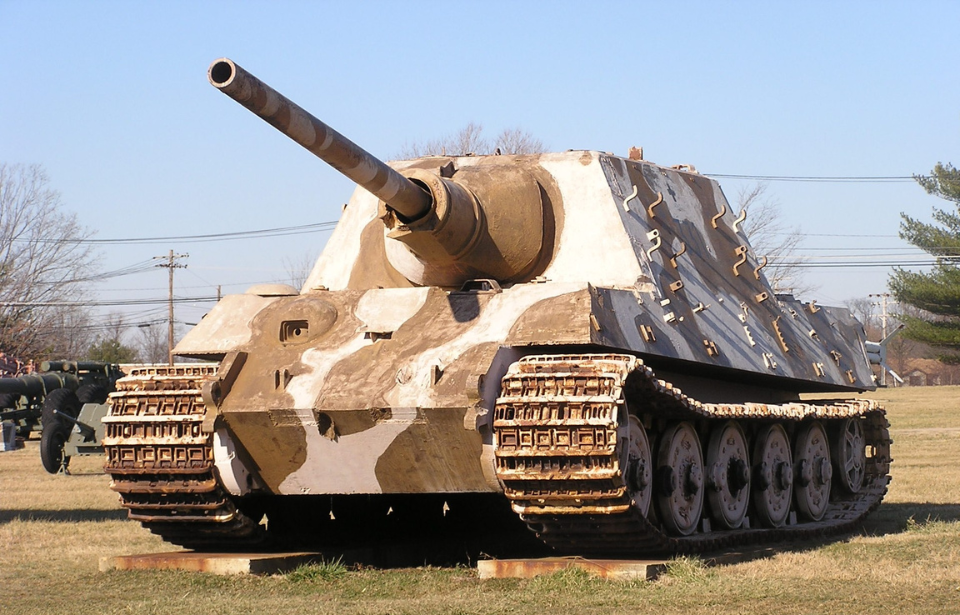During the Second World War, the Wehrmacht utilized state-of-the-art equipment in pursuit of the Führer‘s vision to establish Germany’s military as the most formidable in the world. Among the technologically advanced tank destroyers crafted during this era, the Jagdtiger, officially designated as the Panzerjäger Tiger Ausf. B, stood out.
This formidable armored vehicle played a role in combat on both the Western and Eastern Fronts of the war.
The Jagdtiger was built upon the chassis of a Tiger II heavy tank
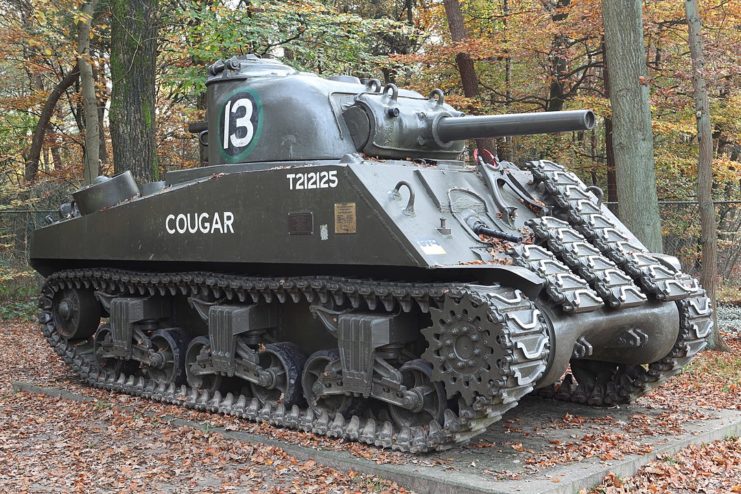
Tanks played a pivotal role in the strategic maneuvers of both sides during World War II. Consequently, the Germans placed an emphasis on equipping themselves with a tank destroyer capable of defeating any Allied tank encountered on the battlefield. The decision was made to mount a formidable 12.8 cm Pak 44 main gun onto a tank chassis, enabling these anti-tank weapons to fire 62-pound shells, effectively neutralizing any enemy tank they engaged.
Across Germany, weapon manufacturers developed prototypes for such a vehicle, experimenting with wooden guns mounted on a Panther and Tiger II chassis. It was soon established that the Panther chassis was unsuitable, leading to the manufacturing of the Jagdpanzer VI, based on the Tiger II chassis, which was later renamed the Jagdtiger.
Production of the Jagdtiger was tricky
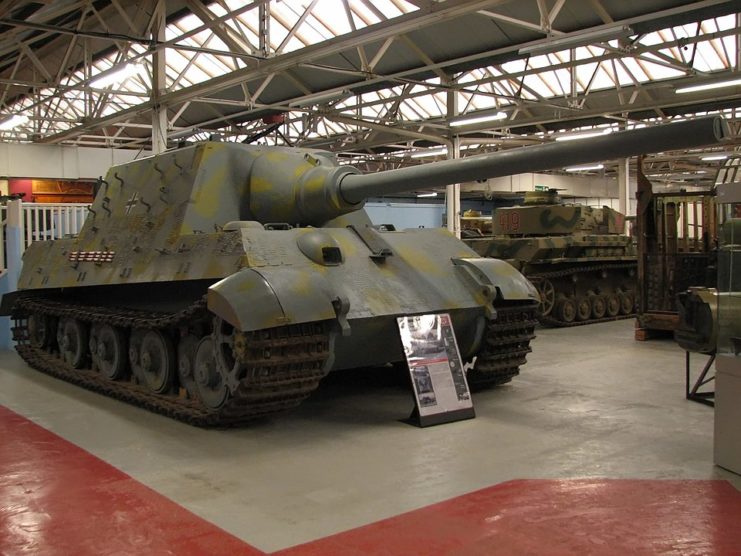
The Jagdtiger boasted a box-like superstructure, enveloped in 250 mm of armor on the casemate and 150 mm on the sloped glacis plate, extending upward across the full height of the former’s top. The tank destroyer’s massive size posed challenges in production, earning it the distinction of being the largest and heaviest tracked vehicle developed and operated during WWII.
Despite an initial order for 150 units and production commencing in July 1944, only 70-85 Jagdtigers were manufactured by the war’s conclusion. This limited output was attributed to persistent issues plaguing the tank destroyer. Its considerable weight posed a challenge for propulsion, as it lacked a sufficiently powerful engine. Consequently, many units faced fuel shortages and various mechanical problems, leading to their loss during the conflict.
The tank destroyer’s issues were amplified on the battlefield
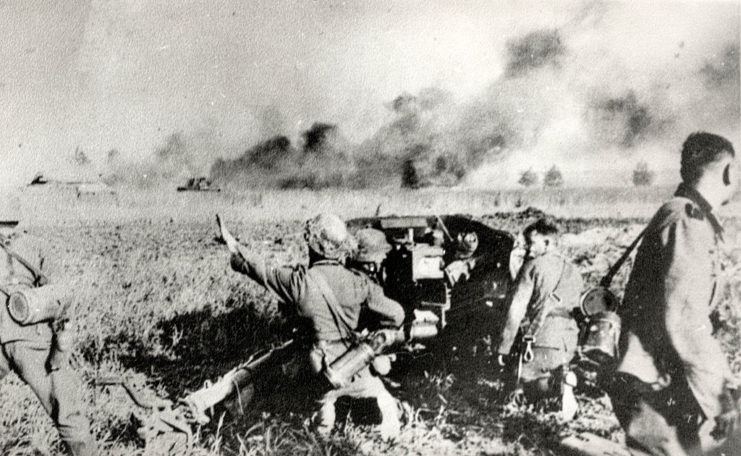
Despite its inherent challenges, the Jagdtiger eventually made its way to the battlefield, primarily due to its formidable anti-tank gun, capable of easily neutralizing enemy vehicles. Nonetheless, the operators of this tank destroyer grew increasingly frustrated due to several reasons. First, the gun required two-part ammunition, necessitating a two-person loading crew. Additionally, it had to be immobilized during maneuvers to prevent rapid wear on its mounting brackets.
Wehrmacht soldiers faced another predicament, as the Jagdtigers were challenging to deploy effectively on the battlefield due to their immense size, restricting them to specific locations. Consequently, only two heavy Panzerjäger battalions – the 512th and 653rd – were outfitted with these vehicles.
Compounding these issues was the inadequate training of the initial Jagdtiger operators. This, coupled with the increasingly unfavorable turn of events for the Germans in the mid-1940s, contributed to low morale among the units entrusted with these tank destroyers.
The Jagdtiger delivered devastating blows
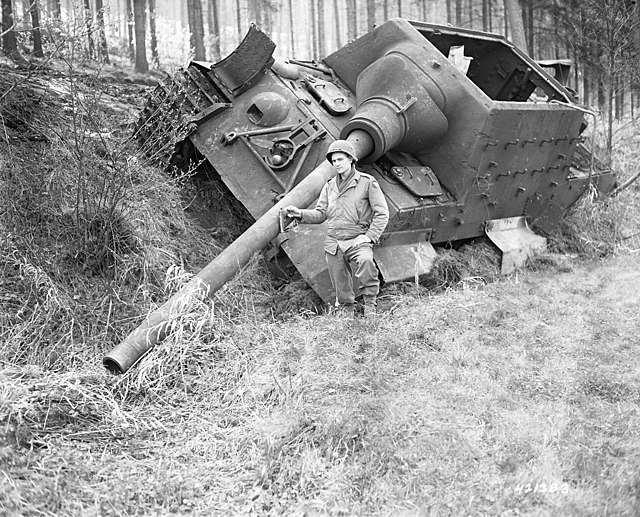
Once the Jagdtigers reached their destination and were properly used, they were devastating. Thanks to their massive guns, the tank destroyers could hit targets hundreds of meters away. Their heavy-duty armor also made them nearly impossible to destroy. That’s not to say, however, that such events never happened. During Operation Nordwind in 1945, a bazooka manned by American infantrymen took out a Jagdtiger.
The tank destroyers had some incredibly impressive feats. During one attack, just three were able to take out 25 Allied tanks, while another saw a fleet of Jagdtigers destroy 11 M4 Shermans and 30 other targets while only losing one of their own.
An enduring legacy
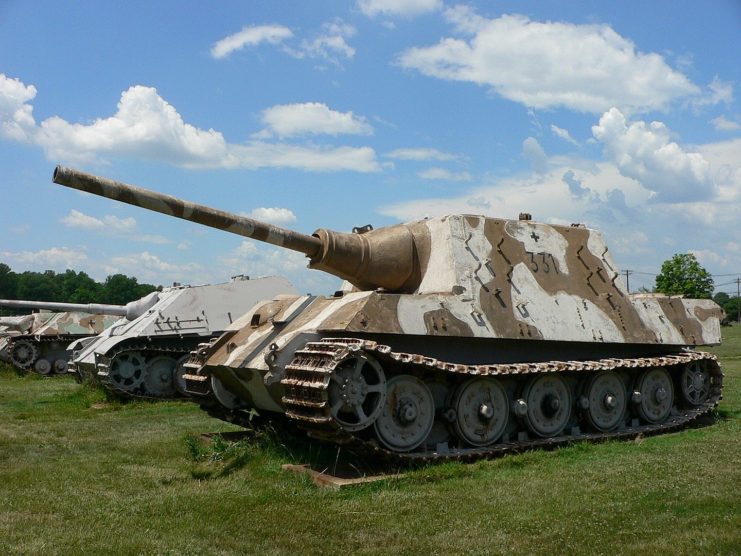
The Jagdtiger was both devastating and limited. While the tank destroyer’s gun was capable of obliterating almost any opponent, the vehicle required a much more powerful engine and other tweaks to make it effective. With the restrictions placed on Germany following the end of the Second World War, such improvements were never made.
More from us: K2 Black Panther: One of the World’s Most Expensive Tanks
Today, just three Jagdtigers are on display in museums. The one housed at The Tank Museum in Dorset, England was captured by the British while it was undergoing testing, while the one at the Kubinka Tank Museum in Moscow, Russia was taken when a German battlegroup surrendered to Red Army troops in May 1945. The final surviving Jagdtiger sits in Fort Benning, Georgia’s National Armor & Cavalry Collection and was captured by American soldiers near Neustadt an der Weinstraße.
